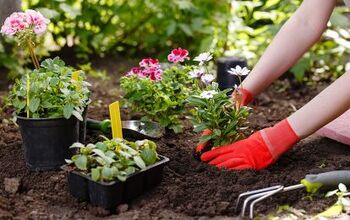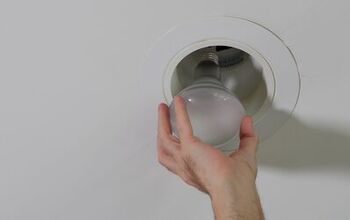Is July Too Late To Plant Flowers?

While many people plant the bulk of their flowers in the spring, some wait until later in the year. However, you’re not alone if you’re worried about planting flowers in mid-to-late summer. So, is July too late to plant flowers?
July isn’t too late to plant flowers, but it is risky and depends on the climate you live in. For example, new flowers are quite vulnerable, so the extreme heat may harm your new plants. You must carefully prepare them with organic mulch or compost, fertilizer, and plenty of water.
Otherwise, they may not catch up to your established flowers quickly enough. Follow along as we explore everything you must know about planting flowers in July.
Can You Plant Flowers In July?
You can plant flowers in July, but the type and how well they will grow vary based on your climate. For example, drought-tolerant plants may thrive when planted in extreme heat, but heat-sensitive plants may struggle. Flowers are at their weakest when you first plant them, so the first few weeks are quite important.
You can’t simply plant any flower in July and expect it to thrive. That’s especially true if you live in the Midwest or on the East Coast. After all, autumn isn’t so far away from July, so the growing season is almost over.
Some people plant flowers late in summer and plan to bring them inside during the fall. This is a great idea, as long as you make sure you don’t accidentally bring pests indoors. The ideal flowers to plant in July vary based on your location, so you must do some research.
What To Know Before Planting Flowers Late In The Season
Planting flowers late in the season isn’t necessarily a faux pas. That said, it’s often climate-dependent and riskier than planting certain flowers in the spring. You must keep several important things in mind before planting flowers in July, such as:
Consider The Heat
Naturally, some plants are more susceptible to heat than others, and that’s important to consider. However, you must also consider that many plants are most vulnerable to heat right when you plant them. That’s because new plants haven’t fully taken root and aren’t as strong as they’ll eventually become.
You must keep that in mind if you plant flowers late in the season during July. That’s especially true if you live in a hot climate with sweltering summers. You can minimize the risk of problems if you plant the flowers early in the day before it gets too hot.
Ideally, you should water your new flowers deeply and early in the day. Doing so reduces the risk that your new flowers will overheat and wilt as the day gets hotter. Keep an eye on your new flowers and move them if they cannot take the July heat.
Do Some Research
Many plants differ in how well they thrive based on what time of year you plant them. For example, some plants do much better when planted in the spring, when it’s rainy and the temperature slowly heats up. You must also carefully research what climate zone certain flowers are best suited for.
For example, flowers that thrive best in hot climates may initially do well if you plant them in July. However, you may eventually need to move your new flowers inside if you live somewhere that gets cold in the fall and winter. That’s because July is late in the season, so you may only enjoy 2-3 months of healthy growth.
You can keep it growing if you move the flowers in when the fall arrives. Otherwise, do your homework and see which flowers can handle being planted so late in the season. This includes sunflowers, poppies, calendulas, and marigolds in many climates.
You Must Go The Extra Mile
July is late in the season, and your new flowers have a lot of catching up to do. That’s why you must go the extra mile with soil drainage, nutrients, fertilizers, and watering. For example, you can prepare your late-season flowers for success with some compost.
The natural compounds in compost and organic mulch can infuse the soil with nutrients that your flowers need. This can help get your flowers off the ground and catch up to your other flowers much faster. Keep in mind that you must water new flowers on a different schedule than older, established flowers.
For example, new plants require more water at first, so you must be careful. If you plant several new flowers, you can group them to save time and conserve water.
Check For Pests
Not only are new flowers more susceptible to pests, but they’re also carriers for them in many cases. That’s especially true if you buy new flowers from your local garden supply stores and plant nurseries. Sometimes, the plants you find at plant nurseries carry pests, like spider mites, which are hard to detect in the store.
That’s because plant nursery owners order plants from other states, which often have different pests than what you’re used to. You must carefully inspect flowers before you buy them and bring them home. It’s also important to quarantine them for a few days when you get home, so they don’t affect your other plants.
Even if your new flowers didn’t come tainted with pests, they’re still vulnerable to them. New flowers aren’t well established, so their leaves and roots are relatively tender. Treat your new flowers for pests, or put them near pest-repellent plants, like marigolds.
Think About The Climate Zone
Planting native flowers in July is much less risky than planting exotic plants late in summer. Native plants are meant to thrive in your climate, so they typically take root quickly. However, you may struggle if you live in Idaho and plant some tropical flowers in July or August.
It’s much better to stick to native plants when you wait longer than usual to plant flowers. Go online and read about the ideal planting time for native flowers in your area. There’s a good chance that some of them do best when planted in July.
Summing It Up
You can plant flowers in July, but the type you can plant varies based on the climate. Luckily, sunflowers, marigolds, and other durable flowers typically do well when planted later in the summer in many climates. You must water new flowers deeply, treat them for pests, and enrich them with nutrients if you plant them so late in the summer.
Related Guides:

Nick Durante is a professional writer with a primary focus on home improvement. When he is not writing about home improvement or taking on projects around the house, he likes to read and create art. He is always looking towards the newest trends in home improvement.
More by Nick Durante


























